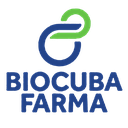Executive Secretary

VIII International Symposium on Chemistry and Pharmaceutical Sciences
SICF
VIII Symposium "Design, Obtaining and Development of Drugs"
Abstract
The Chemical Bioactive Center (CBQ) produces an active ingredient called Furvina (2-bromo-5-(2-bromo-2-nitrovinyl)-furan with a powerful broad-spectrum bactericidal and fungicidal action (yeast and filamentous fungi). Furvina-loaded n-butyl polycyanoacrylate (PBCA) polymeric nanostructures may be potential delivery systems for Furvina delivery, due to their biodegradability and surface (negatively charged) properties, and can be effectively used as antibacterial and Topical antifungal.Therefore, in the present work we evaluate the in vitro activity of PBCA meshes with different concentrations of Furvina (15%, 20% and 25%) and control meshes of PBCA without furvin against reference strains of bacteria and yeasts.Three replicates were used for each concentration (PBCA Mesh, PBCA Mesh_15% Furvina, PBCA Mesh_20% Furvina and PBCA Mesh_25% Furvina) and four pathogens (Escherichia coli, Pseudomonas aeruginosa, Staplylococcus aureus and Candida albicans) were confronted using the disc diffusion method (Kirby-Bauer). The meshes were cut into 6 mm discs. The meshes evaluated with different concentrations of Furvina showed activity against Staphylococcus aureus ATCC 25923, Pseudomonas aeruginosa ATCC 27853, Escherichia coli ATCC 25922 and Candida albicans ATCC 10231. The PBCA meshes with Furvina showed greater activity against Candida albicans ATCC 10231.
Resumen
En el Centro de Bioactivos Químicos (CBQ) se produce un principio activo denominado Furvina (2-bromo-5-(2-bromo-2-nitrovinil)-furano con potente acción bactericida de amplio espectro y fungicida (hongos levaduriformes y filamentosos). Las nanoestructuras poliméricas de policianoacrilato de n-butilo (PBCA) cargadas con furvina pueden ser posibles sistemas de transporte para la administración de la furvina, debido a su biodegradabilidad y a las propiedades de su superficie (carga negativa) y se pueden utilizar eficazmente como antibacteriano y antifúngico de uso tópico. Por lo que en el presente trabajo evaluamos la actividad in vitro de mallas de PBCA con diferentes concentraciones de furvina (15%, 20% y 25%) y mallas controles de PBCA sin furvina frente a cepas de referencia de bacterias y levaduras. Se utilizaron 3 réplicas por cada concentración (Malla de PBCA, Malla de PBCA_15% Furvina, Malla de PBCA_20% Furvina y Malla de PBCA_25% Furvina) y se enfrentaron a cuatro patógenos (Escherichia coli, Pseudomonas aeruginosa, Staplylococcus aureus y Candida albicans) utilizando el método de difusión de discos (Kirby-Bauer). Las mallas se recortaron en discos de 6 mm. Las mallas evaluadas con
diferentes concentraciones de furvina presentaron actividad frente a Staphylococcus aureus ATCC 25923, Pseudomonas aeruginosa ATCC 27853, Escherichia coli ATCC 25922 y Candida albicans ATCC 10231. Las mallas de PBCA con furvina presentaron mayor actividad frente a Candida albicans ATCC 10231.
About The Speaker

M. Sc. Ester María Hernández Martínez

Discussion




